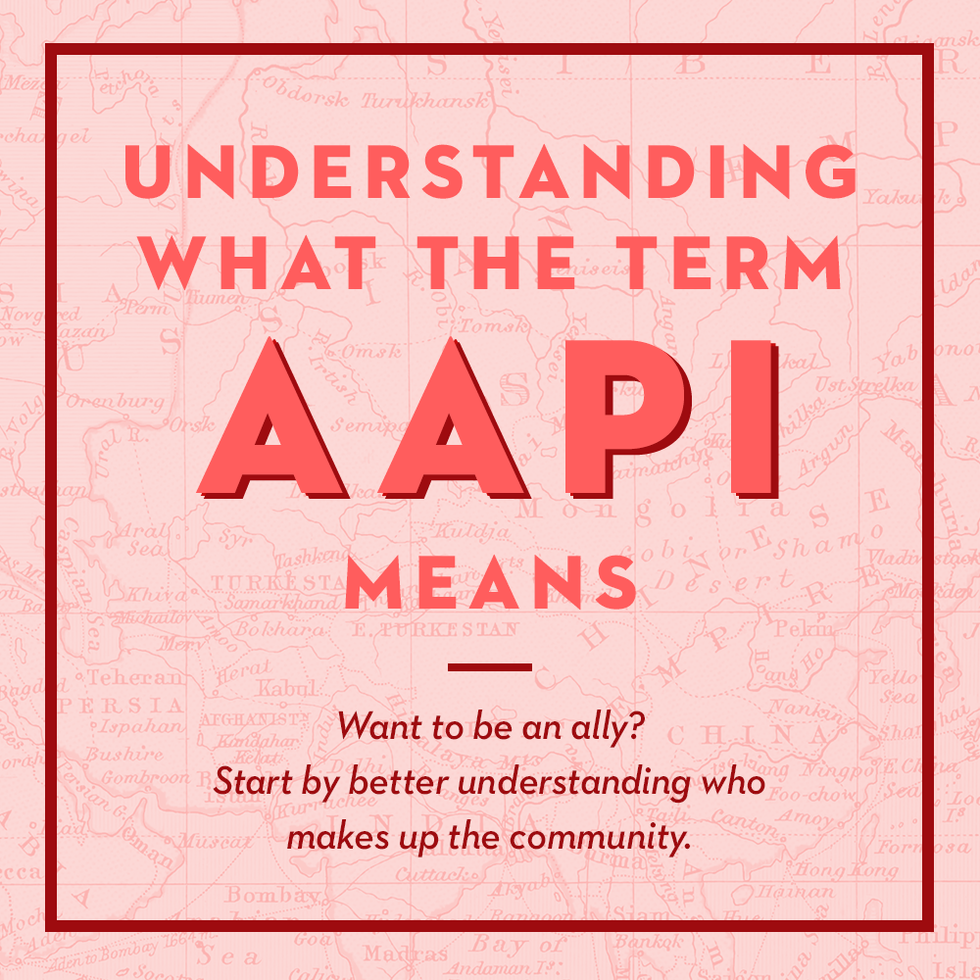The first day of May is the start of Asian American and Pacific Islander (AAPI) Heritage Month. The month celebrates the historical and cultural contributions of Asian American and Pacific Islander people — an umbrella group which includes those with heritage or ancestry from East, Southeast, South, Central and West Asia and the Pacific Islands. Asia is the largest continent and consists of around 50 countries with more than 4 billion people, and the World Bank's Pacific Island member countries have a combined population of about 2.3 million people. In addition, Asian Americans are the fastest growing racial or ethnic group in the U.S.
There is so much to celebrate from Asian and Pacific Islanders — and still so much more to do to uplift and support our community. Pop culture from Asia in the form of music, media and style has become wildly popular in the U.S., especially with the accessibility of streaming services and rapid delivery that allow for the easy dissemination of cultural products. The interest in Korean culture, for instance, has skyrocketed so much that Koreans even have a term for it — Hallyu, which means the “Korean wave,” includes the international obsession and consumption of K-dramas, K-pop and K-beauty.
In the last five years alone, two films with majority Asian casts and directors won Best Picture at the Academy Awards and politicians with AAPI heritage like Kamala Harris and Ted Lieu were elected to office. Prior, Asian Americans have a history of achieving extraordinary things, both as individuals and together as a collective. For example, architect Maya Lin won the architectural competition to design the Vietnam Veterans Memorial in 1981, and a pan-Asian collective organized to exonerate a wrongfully convicted Korean-American from death row in the Free Chol Soo Lee movement in the late 1970s.
Yet, Asian Americans have battled xenophobia and perpetual foreigner syndrome throughout history and continue to do so, which contributes to high levels of stress and mental health issues that are exacerbated by far-reaching cultural stigma around mental illness. Further, AAPI communities continue to experience anti-Asian violence and harassment, struggle with language and assimilation, and bear the weight of intergenerational trauma, microaggressions and systemic bias at work, school and their homes.
Given these challenges and victories, AAPI Heritage Month is an opportunity to celebrate AAPI people, study the historic and contemporary barriers and violence they face in the United States and commit to further understanding, inclusion and partnership with the AAPI community.
Why is AAPI Month in May?
May was chosen as annual AAPI Heritage Month in the late 1970s by Congress because of two significant historical events for the AAPI community in the United States. May 7, 1843 is the date that marks the first Japanese immigrant to the United States — a 14-year-old fisherman named Manjiro who arrived by a whaling ship and is sometimes called “The U.S.’s first ambassador to Japan.” The other major milestone in May is the completion of the construction of the transcontinental railroad on May 10, 1869, which was built primarily with the labor of Chinese immigrants.
What is the history of AAPI Heritage Month?
In 1977, members of the United States Congress proposed dedicating several days in the beginning of May to celebrate the heritage and contributions of Asian American and Pacific Islanders. President Jimmy Carter signed it into law in October 1978, and “proclaimed the 7-day period beginning on May 4, 1979 as 'Asian/Pacific American Heritage Week.’”
In 1992, under President George H.W. Bush, Congress passed an amendment that expanded the week into Asian/Pacific American Heritage Month. The month was officially renamed Asian American and Pacific islander Heritage Month, or AAPI Heritage Month, in 2019.
Which states have the most and least AAPI populations?
According to the U.S. Census Bureau, there are 20 million people, or 6% of the U.S. population, who identify as Asian. For Native Hawaiian or Other Pacific Islanders, there is less than 1%, or 690 thousand people, who reside in the states. Hawaii has the highest population of both Asians and Native Hawaiian and Other Pacific Islanders, and Montana has the lowest population of Asians.
How can I celebrate AAPI Heritage Month?
Remember that AAPI Heritage Month is not just for Asian Americans and Pacific Islanders — it's a celebration that every American can partake in. In fact, AAPI Heritage Month is an opportunity for allies to learn more about AAPI people, culture and accomplishments, and to highlight AAPI voices and leadership.
Specific historic and cultural barriers — such as the model minority myth, the perpetual foreigner stereotype and the pressure to assimilate — can make it challenging for AAPI members to speak out against violence or racism, making it critical to create partnerships and allies in other communities. While AAPI people are considered people of color (POC) and included in the BIPOC (Black Indigenous People of Color) dialogues, Asian and Pacific Islander people have unique experiences and challenges that need to be differentiated.
You can strengthen your allyship this AAPI Heritage month by educating yourself on challenges particular to the AAPI community. You can also partake in the joy and celebration of AAPI voices, minds and hands by reading and watching pop culture by Asian American and Pacific Islander creators or about AAPI characters and communities, eating Asian and Pacific foods and buying from local and international AAPI businesses.
As an ally, one of the most important ways to celebrate AAPI Heritage Month in May and year-round is speaking out when it matters, whether that is to condemn and criticize casual racism and discrimination you witness in your social circles or workplace and making a concerted effort to elevate AAPI voices and achievements to make a difference. Cross-cultural collaboration, support and empathy will strengthen both the AAPI community and all communities across the U.S.
Culture
Support
Important Reads

Shanon is a writer and editor who specializes in best-of product roundups and deals. She has over six years of experience, including almost three years as a Good Housekeeping product and reviews editor, covering the best sales and products across home, appliances, health, beauty, parenting and more.
Minhae Shim Roth is a writer and reporter based in the San Francisco Bay Area.




































